The town of Perast had extremely difficult moments in 1654 when the attacks of the Turks were especially dangerous. Their brave and successful defense of Boka was the reason of the arrival of Petar Zrinski, a famous Croatian statesman, who also had numerous dramatic battles with the Turks. During his three day sojourn in Perast he presented his legendary sword to the town, as the sign of his recognition to their efforts to defend their homeland, and to stop the approach of the Ottoman Empire to Middle Europe.
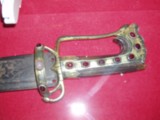
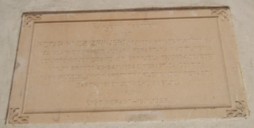
Many thanks to Smiljana Šunde and Vesna Svaguša for the photos.
NA VJECNU USPOMENU
KAD
PETAR KNEZ ZRINJSKI, VOJVODA HRVATSKI, POTOM BAN
IZA SLAVNE POBJEDE JUNAKA PERASTANA NAD TURCIMA
ODVJETOVANJEM GOSPE OD SKRPJELA 15.V.1654. DOJEDRI
SVOJIM BRODOM 23-24.V.1654. U PERAST DA CESTITA
KAKO RECE : SLAVNOM SRETNOM I PLEMENITOM PERASTU
DAROVAVSI IM JUNACKU SABLJU
P.
GRAD PERAST - 15.V.1928.
|
FOR ETERNAL REMEMBRANCE
WHEN
PETAR PRINCE ZRINJSKI, CROATIAN DUKE AND BAN
AFTER A FAMOUS VICTORY OF PERAST HEROS OVER THE TURKS
WITH HELP OF GOSPA OD SKRPJELA 15.V.1654. SAILED
WITH HIS BOAT 23-24 V 1654 TO PERAST TO CONGRATULATE
AS HE SAID : TO THE FAMOUS, HAPPY AND NOBLE PERAST
PRESENTING IT WITH HIS BOLD SABRE
P.
GRAD PERAST - 15.V.1928.
|
An article dealing with the Zrinski sword in Perast has been written by Dr Pavao Butorac (1888-1966), bishop of Kotor since 1938 and of Dubrovnik since 1950.
In 1944, bishop Pavao Butorac had to escape from Kotor to Dubrovnik in front of partisans, saving his life. Since then, the Kotor Diocese was without any bishop until the 1970s. Information by academician Josip Pecaric.
Many Croatian artists (like Tripo Kokolja) have described the struggle of Bokeljs against the Turks. The verses of "Kotor Knights" written by Andrija Kacic Miosic(1704-1760) in his famous book "Razgovori ugodni naroda slovinskoga" (published in Venice, 1756, 1759) start as follows:
| Ej Kotore, gnizdo sokolova, na visokoj grani savijeno, di se legu zmaji i sokoli, koji caru puno dodijase! Svijeno je na jeli zelenoj ter pokriva Buku od Kotora, kojano je dika od Hrvata i vitesko srce od junaka." |
As we see, the verses describe Kotor as the nest of falcons, and as the pride of Croats. Kacic's book was enormously popular in Croatia. It was translated by A. Fortis, and some of the verses appear in Herder's "Volkslieder". Some of the verses were translated also into French, and even into Latin. In Croatia the book had about eighty editions!
One of Croatian churches, given as a gift to Serbian Pravoslav Church in Kotor already in 1657 (during Venetian rule), was the church of St Luka in Kotor. The church itself is much older, and dates from 1195. Above the main entrance to the Church we can now read the following inscription "Serbian Pravoslav Church - 1195." This falsification that appeared in 1990's aims to "prove" that the Serbs built this church already in 1195. In 1995 the Serbs in Montenegro even "celebrated" 800th anniversary of this church which was Catholic until 1657, when it was given as a gift to Serbian Pravoslavs.

One of the greatest Croatian Baroque painters is Tripo Kokolja (1661-1713), born in the town of Perast in Boka kotorska, whose works of art are held in the Church of Gospa od Skrpjela, and also in the Dominican church in Bol on the island of Brač, in the town of Hvar on the island of Hvar, in the town of Korčula on the island of Korčula (where he died), and in the city of Dubrovnik.
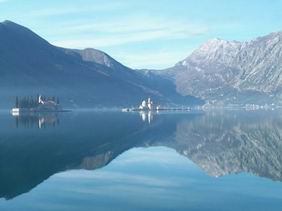
When a Russian travel-writer P.A. Tolstoy visited Boka in 1698, he noted that the local hills are also inhabited by the Croats.
Jozo Kljaković (1889-1969) is a distinguished Croatian painter and illustrator. His paintings and murals are mainly of religious content. Kljaković is best known for his frescoes that he painted in the church of St. Mark in Zagreb, in the parish churches of Vranjic (near the city of Split), in Dobrota in Boka kotorska, and in the memorial church in Biskupija near the town of Knin, as well as for his mosaics in the Pontifical Croatian St. Jerome Institute in Rome. He left Croatia in 1943, and spent the following 25 years in Rome and Buenos Aires.
A distinguished Croatian composer Ivan Brkanović (1906-1987) was born near the town of Kotor in Boka kotorska. He studied at the Music Academy in Zagreb. Among others, he was a director of The Zagreb Philharmonic and professor at the University of Sarajevo. He composed Bokeljsko kolo, Konavosko pirovanje, opera Zlato Zadra (Gold of Zadar), etc.
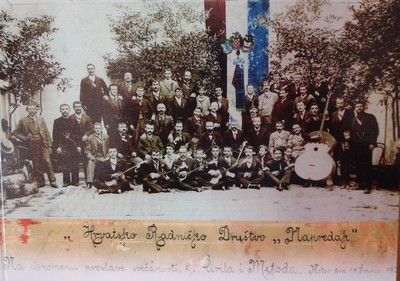
Croatian Working Society Progress (Hrvatsko Radničko Društvo Napredak), Kotor 1901
From the front cover page of Stolacko kulturno proljece, Godišnjak za povijest i kulturu, god. VII., 2009.
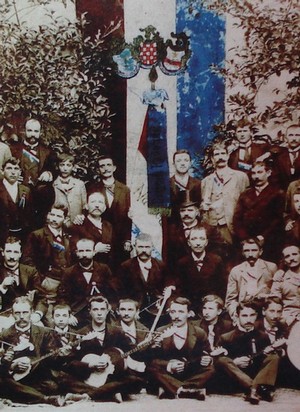
Note Croatian Coat of Arms on the tricolor flag

Croatian tamburitza players in Kotor in 1901
In the Boka kotorska churches there are important works of art of many outstanding Croatian artists, like Ivan Mestrovic, Antun Augustincic, Celestin Medovic, and others.
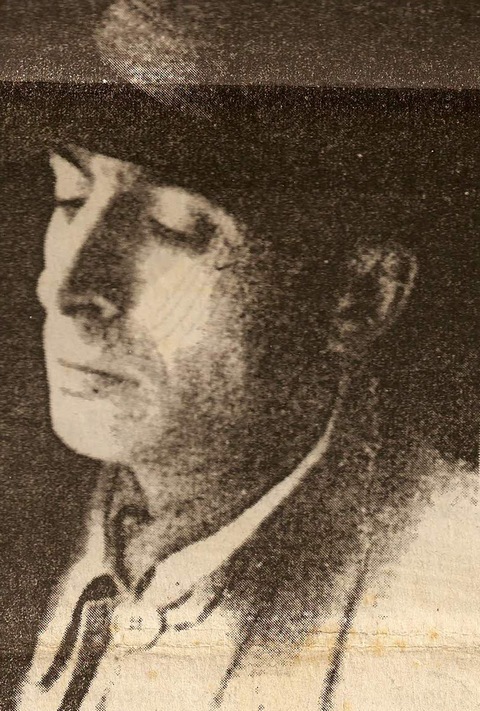
Viktor Vida
Important Croatian poet born in the town of Kotor is Viktor Vida (1913-1960), since 1945 living in Buenos Aires in Argentina. Here are some of his verses:
"Freedom, I like you as bread
Freedom, I like you as a star and bird
Freedom, I like you as a beloved dream.
(Freedom)
SPIRITUAL CROATIA
All the earthly experiences undergone by Croatia reflect on her own significance. Her true national character corresponds more to the formations, which gleam at us from the depths of eternity, as stalagmites in bluish caves, the deposits of geological millennia, than to the political expediences of empirical reality...
...I imagine the land of Croatia as a white fortress high on a glacier beneath which mists roll and fiery dragons hiss. The mire bubbles in the ravines and furrows, yet will never defile the holy threshold of the fatherland.
Here, then, is Croatia several miles above the earth in elevated spheres. It reigns above the clouds with a hoary smile and white roses all around, as a beautiful woman in the apotheosis and quintessence of light and sound.
In her hands a sceptre; her locks of hair the silvery moon. Deep down below her the iron raven crows late in the centuries.
According to official Montenegrin sources, 40% of real monumental property and 66% of movable monumental property of this republic is in the Boka kotorska region. This means that at least 50% of the entire monumental cultural heritage of Montenegro belongs to the Catholic church in Boka, i.e. to the Croats. And now Montenegro has less than 1% of Catholics.
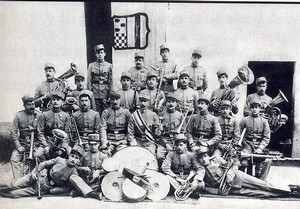
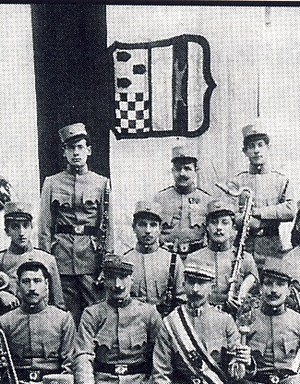
Croatian Bokelj Music in 1910 in Kotor, Boka kotorska
(source: Milos Milosevic, Tripo Schubert: Tri hrvatska glazbenika i skladatelja,
Hrvatska revija, 2, Zagreb 2007, pp. 49-58). Note Croatian Coat of Arms.
A result of the assimilation and systematic persecutions from the Serbs and Montenegrins in the Boka kotorska region was that the population of the Croats began to diminish rapidly since Yugoslavia was created in 1918, and especially after the aggression against Croatia in 1991. Let us illustrate only the "silent" ethnical cleansing in the ex-Yugoslav period (1918-1991). Namely, while in the period from 1910 (when the last Austro-Hungarian census was held) to 1991 (the last ex-YU census) the overall population in Boka kotorska doubled, on the other hand the number of Croats dropped in the same area three times.
The towns of Kotor, Perast, Tivat, Dobrota, Prcanj, Herceg Novi and Budva had a Croatian majority in 1910. A large Catholic majority in 1910 had peninsula Vrmac and southern part of Spich (from Sutomore to the border between Boka kotorska and Montenegro near the town of Bar). For example,
- the number of Croats in Kotor dropped from 69% in 1910 to 7% in 1991;
- in Herceg Novi from 70% to 2%;
- in Tivat from 95% to 23%.
In 1991 there were only 8% of Croats in Boka kotorska region, and today (after 1991-1995 Serbian and Montenegrin aggression on Croatia and Bosnia-Herzegovina) even less. For example, 350 Croatian families had to leave their native town of Tivat in the period of 1991-1998.
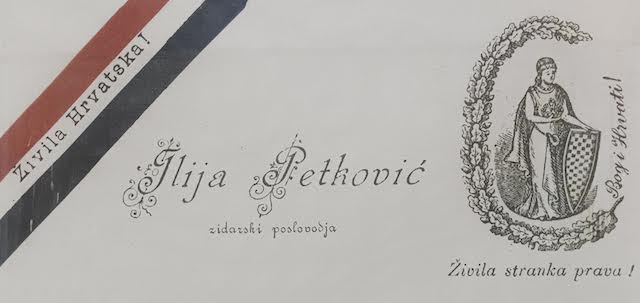
Visiting card of
Ilija Petković, zidarski poslovodja (masonry foreman), president of the Tivat municipality in Boka kotorska.
Živial Hrvatska! (Long Live Croatia).
Živila stranka prava! (Long Live the Party of the Right) with
Croatian Coat of Arms.
Bog i Hrvati! (God and the Croats). Probably from arround 1935.
Photo by the courtesy of Zvonimir Deković, Donja Lastva (near the city of Tivat) in
Boka kotorska.
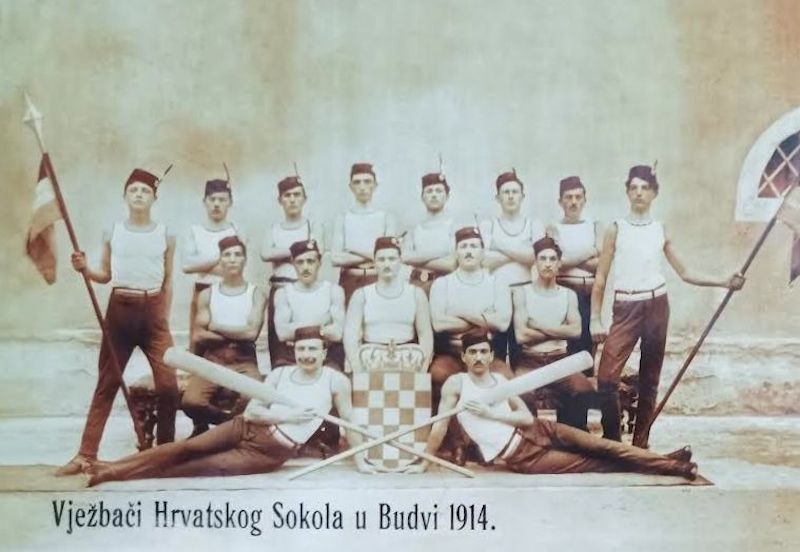
"Croatian Falcon" sports club in the city of Budva, 1914
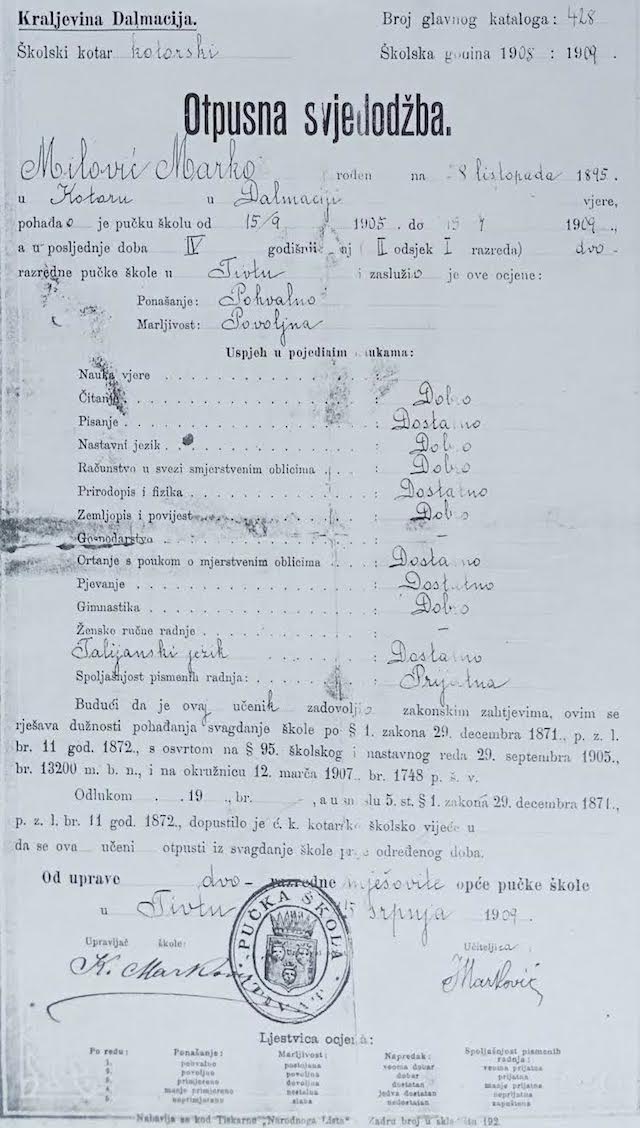
Release certificate for Marko Milović born in 1895 in Kotor
in the Kingdom of Dalmatia,
issued in 1909 by primary school in Tivat.
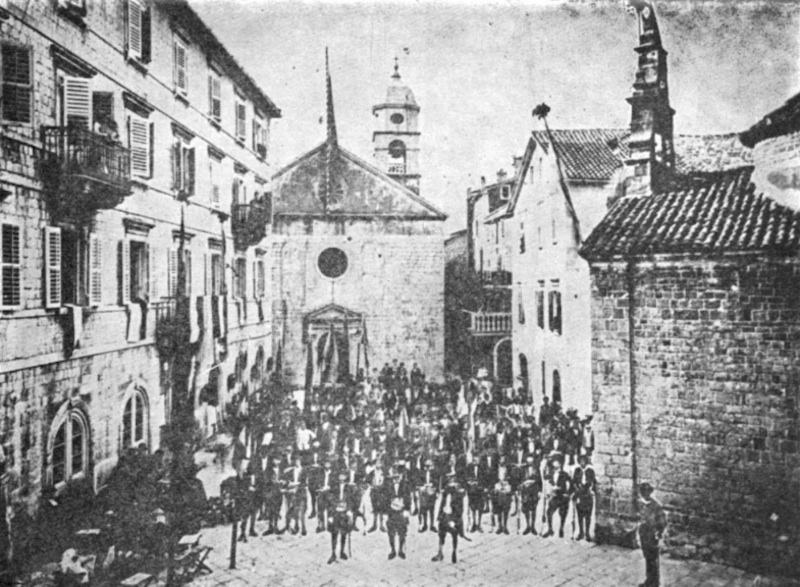
The Chucrch of sv. Nikola in Kotoru was founded in the 15th century as a Catholic church by the Dubrovnik dominicans.
Since the beginning of the 19th century, during the French rule it became the pravoslav orthodox church.
On the right one can see the church of sv. Luka, also a pravoslav church. These are the the only pravoslav churches in the city of Kotor. Both of them used to be catholic churches.
Photo from the monograph by don Niko Luković:
Blažena Ozana kotorska / jubilarno izdanje povodom 400. godišnjice smrti
(1565-1965.), Kotor 1965. (
You Tube, in Croatian).
According to information provided by Zvonimir Deković, the church of sv. Nikola was deliberatly set to fire in 1896 (destroying the valuable library of the former Dominican Monastery, containing thirty thousand of books),
and a new church was built on its ruins; the city of Kotor had as many of 32 Roman Catholic churches.
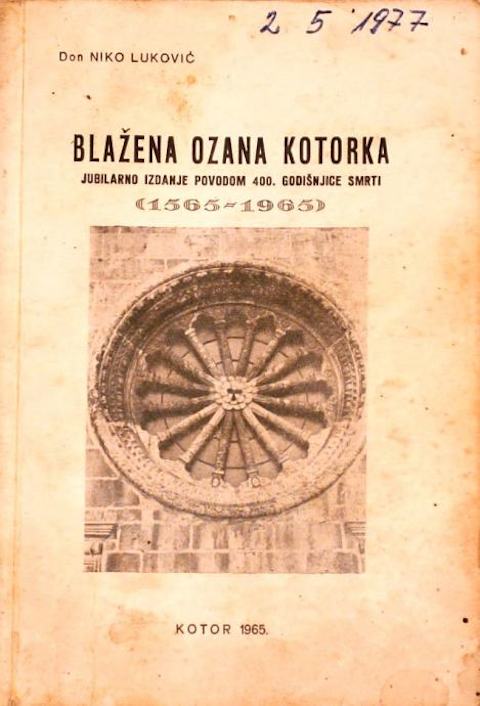
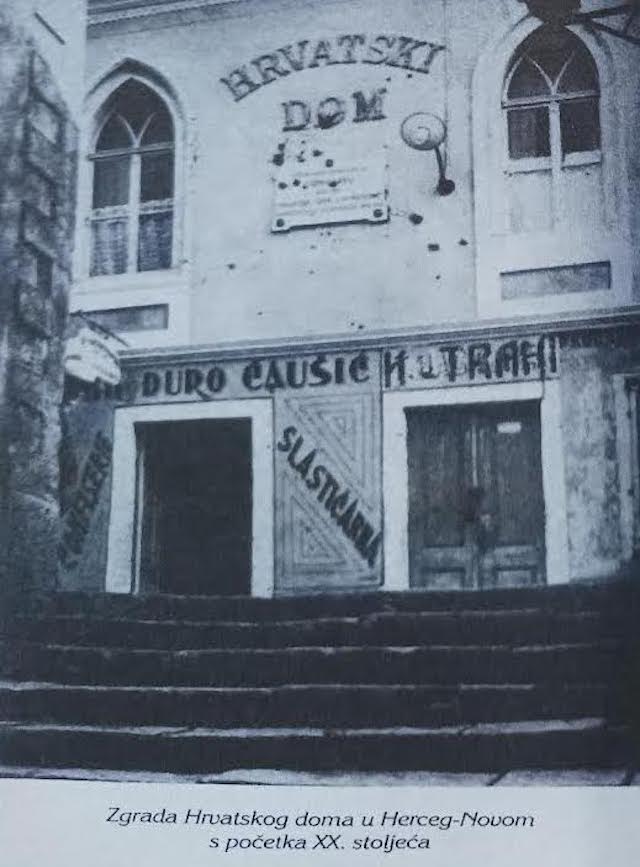
Building of the Croatian culutral society of "Croatian House" (HRVATSKI DOM) in Herceg-Novi;
photo from the beginning of the 20th century; by the courtesy of Zvonimir Deković, Donja Lastva.
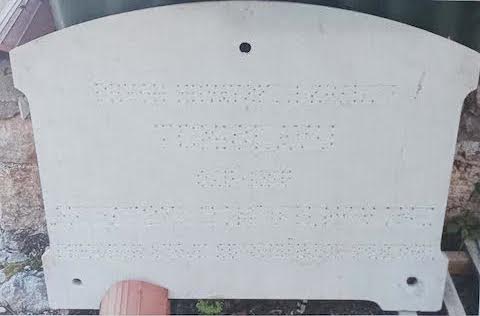
The inscription today, with individual letters vandalically removed.
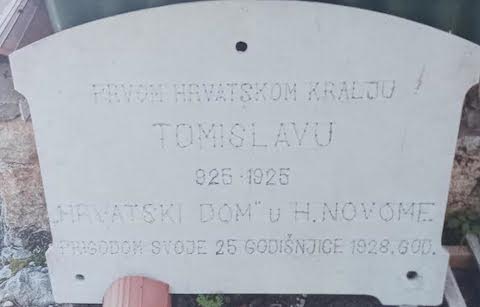
Reconstructed text from the beginning of the 20th century:
PRVOM HRVATSKOM KRALJU (To the first Croatian King)
TOMISLAVU (Tomislav)
925-1925
"HRVATSKI DOM" U H. NOVOME. (Croatian House in Herceg-Novi)
PRIGODOM SVOJE 25 GODIŠNJICE 1928. GOD. (On the occasion of its 25th birthday.)
This indicates that the Croatian cultural society of "Hrvatski dom" (Croatian House) in Herceg-Novi was founded in 1903.
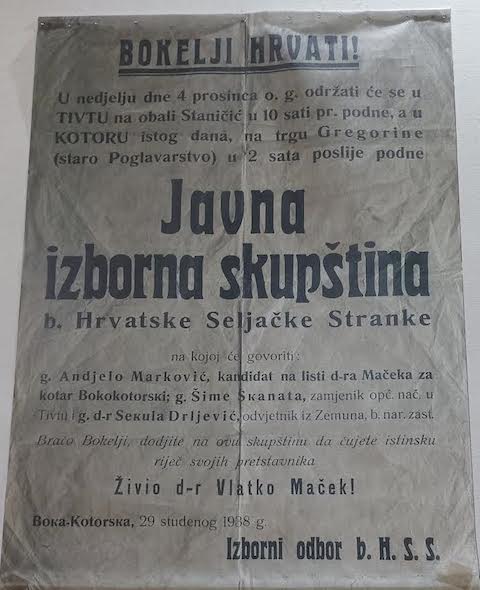 Boka Croats!
Boka Croats! ... Public Electoral Assembly of the Croatian Peasant Party in Tivat and in Kotor in 1938,
with Andjelo Marković, Šime Škanata, dr. Sekula Drljević (from Zemun) as candidates.
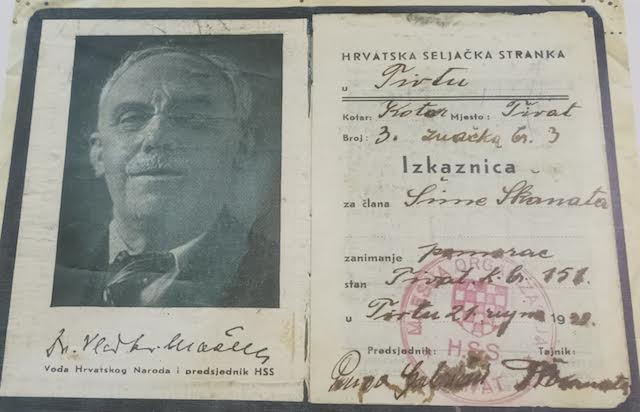
Hrvatska Seljačka Stranka u Tivtu, iskaznica za Šime Skanata, 1939.
Lijevo dr. Vladko Maček.
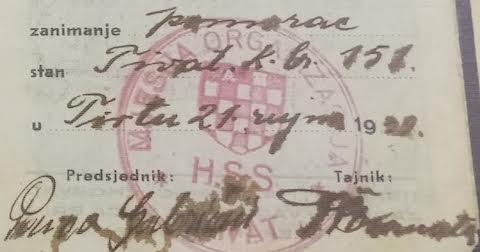
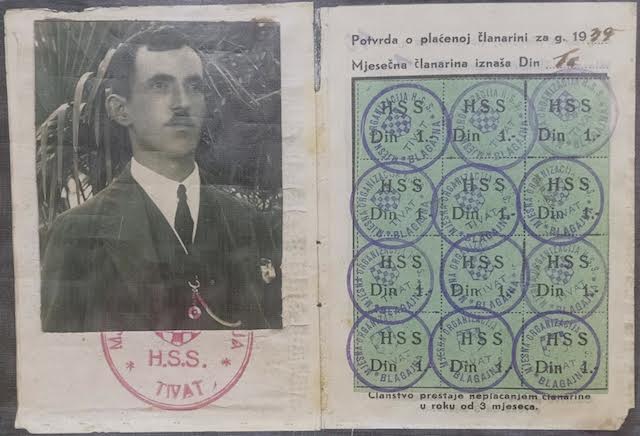
Šime Skanat, Tivat, pomorac
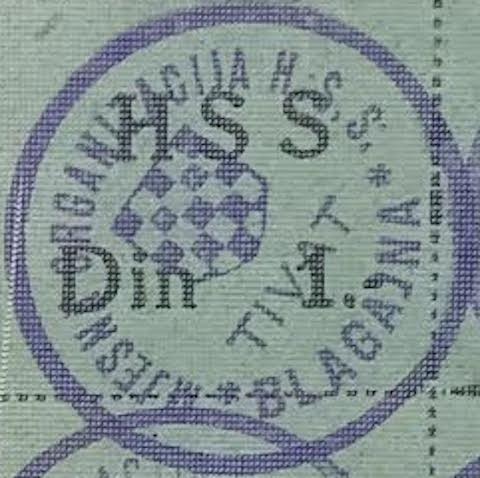
Mjesna organizacija HSS-a, Tivat
The above photos by the courtesy of Mr. Zvonimir Deković, Donja Lastva near Tivat in Boka kotorska.
In June 1996 msgr. Ivo Gugic, bishop of Kotor, was cruelly killed (strangled by a wire).
The name of the town of Dobrota in Kotor bay has an interesting meaning: Goodness. In fact, the French bonte is even closer to the meaning of Croatian dobrota. And there is a family name - Dobrota, that can be found also among the Croats in Konavle region south of Dubrovnik.
The photos below are from [Čurić ed.] and Gornja Lastva.
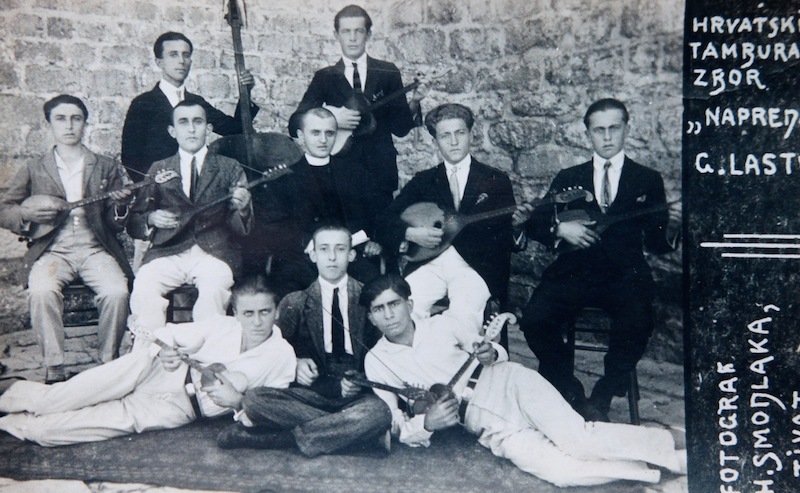
Croatian tamburitza choir "Napredak" (Advancement), Gornja Lastva, 1919
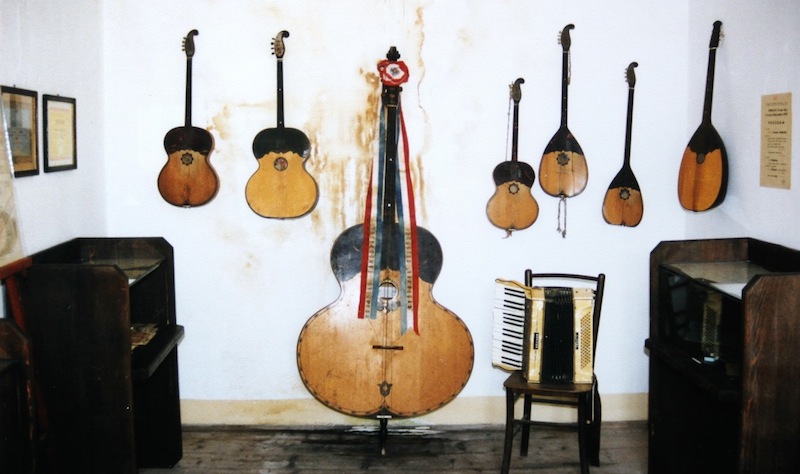
Exhibition of music instruments in Gornja Lastva
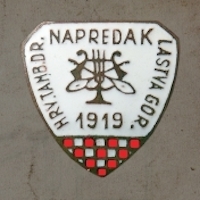
Hrv(atsko) tamb(uraško) dr(uštvo) NAPEDAK, Lastva Gornja
Croatian Tamburitza Society NAPREDAK (Advancement), Lastva Gornja
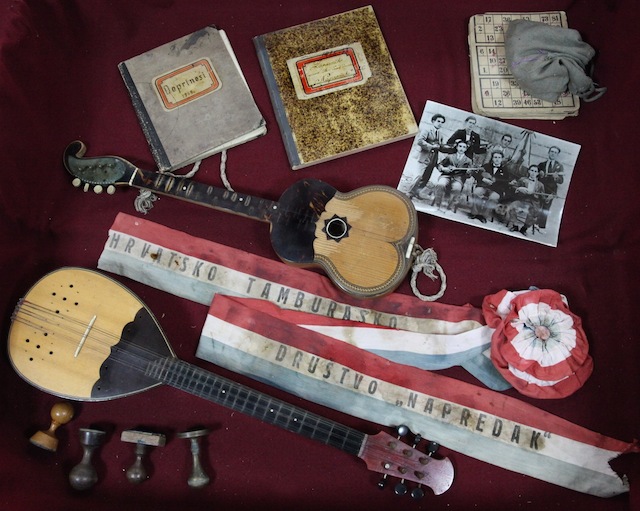
Hrvatsko tamburaško društvo "Napredak"(Croatian Tamburitza Society "Advancement") in Gornja Lastva
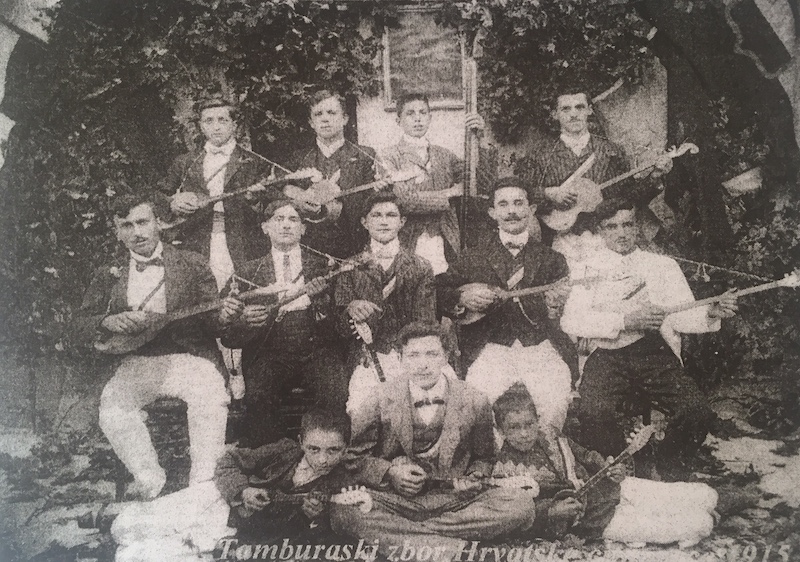
Tamburitza choir of Croatian Savings Bank, Donja Lastva, 1915
Croatian tamburitza choir "Napredak",
Gornja Lastva, 1939 (founded in 1919)
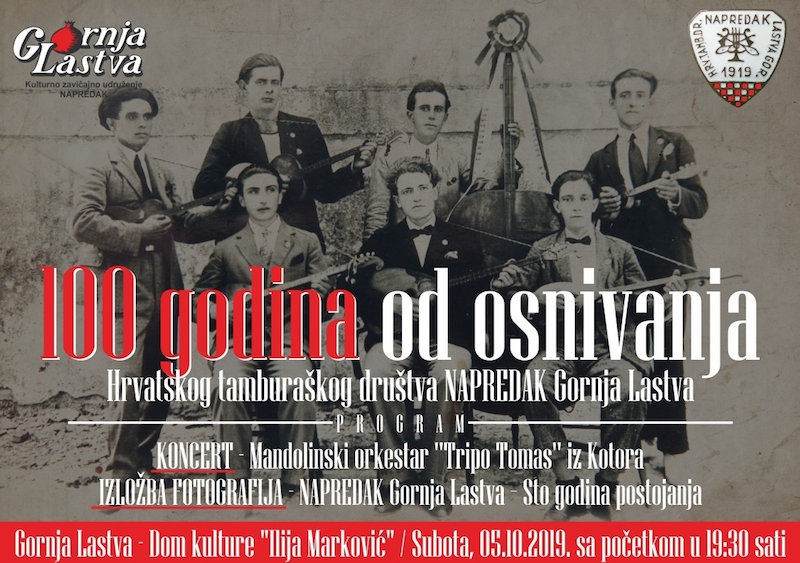
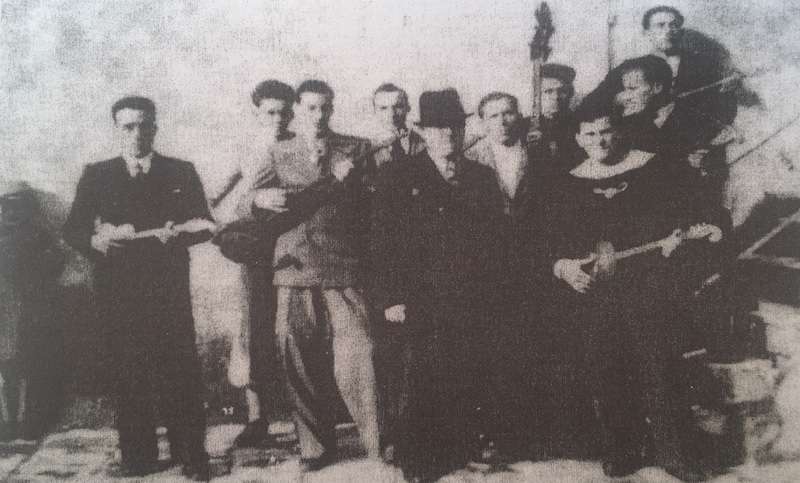
Croatian tamburitza choir "Zmajević", Perast, 1900
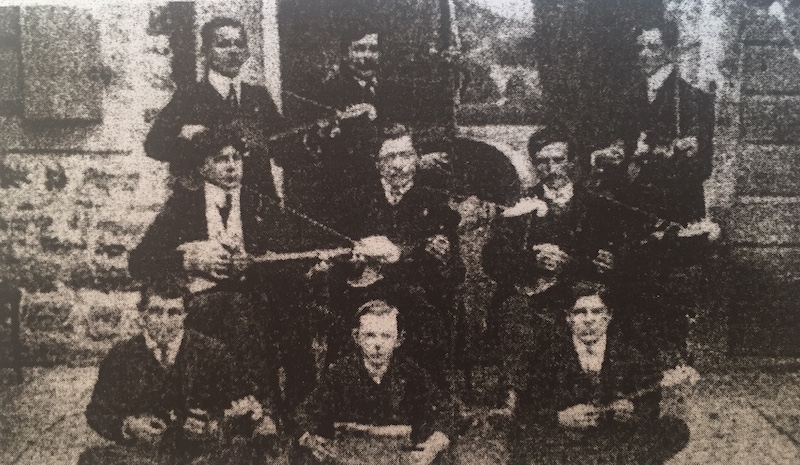
Croatian tamburitza choir "Starčević", Tivat, 1906
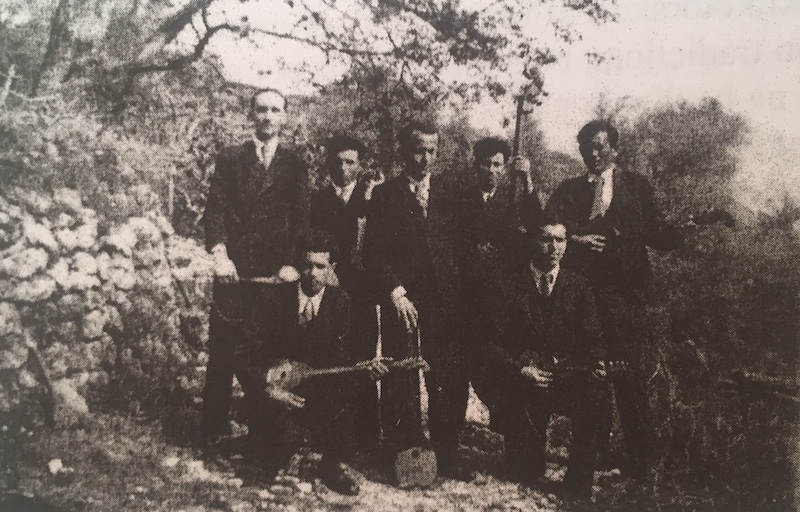
Tamburitza choir "Sloga" (Harmony), Mrčevac
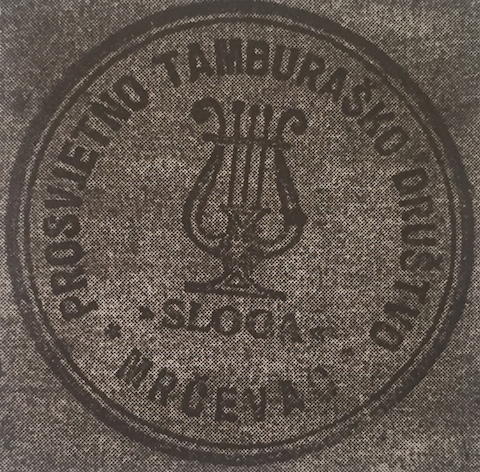
Seal of the Mrčevac tamburitza choir "Sloga"
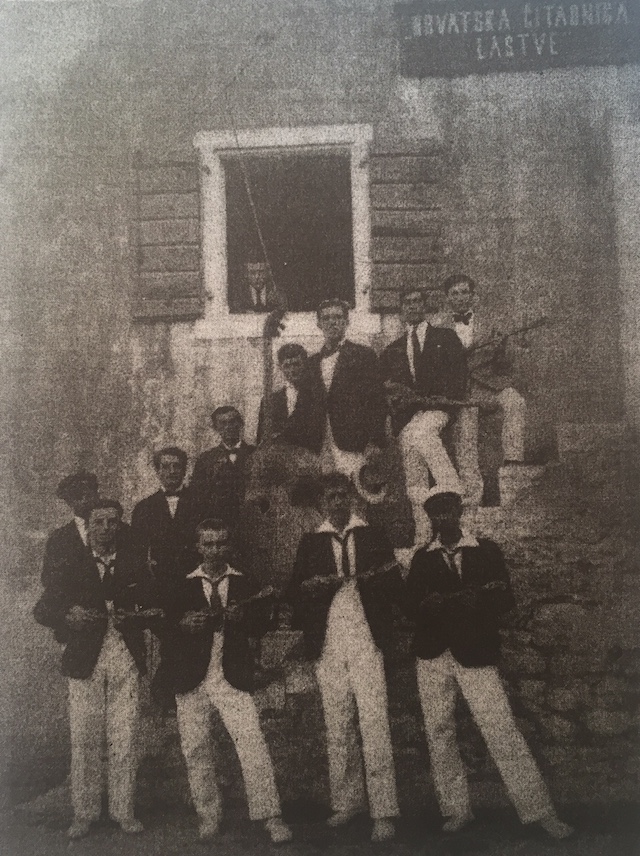
Tamburitza choir of Croatian Savings Bank, Donja Lastva, 1912.
Above the window on the right: Hrvatska čitaonica Lastve (Croatian Reading Room of Lastva).
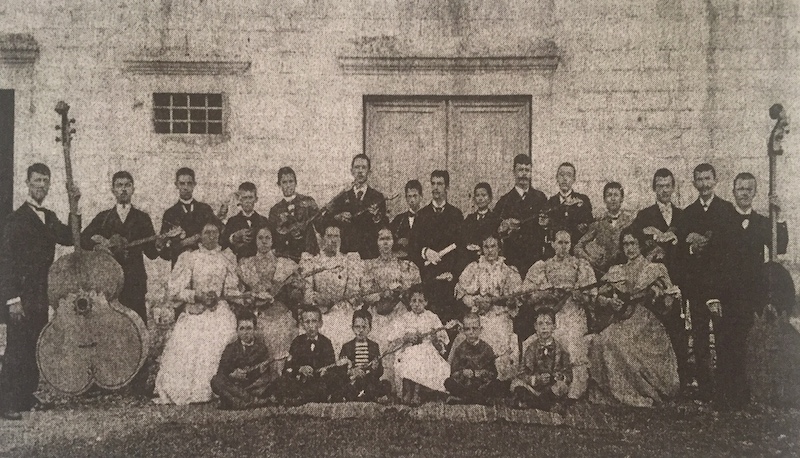
Tamburitza orchestra "Zora" (Dawn), Dobrota, 1896
Croatian tamburitza choir "Sloga" (Harmony), Prčanj, cc 1903, Boka kotorska
According to information provided by Zvonimir Deković (Donja Lastva), there were two more Croatian societies and tumburitza orchestras:- "Zvonimir" (named after Croatian king from the beginning of the 10th century) in the village of Muo
- "Sastanak" (Reunion) in the village of Škaljari.
Both Muo and Škaljari are not far from the city of Kotor.Please, go to part III below.